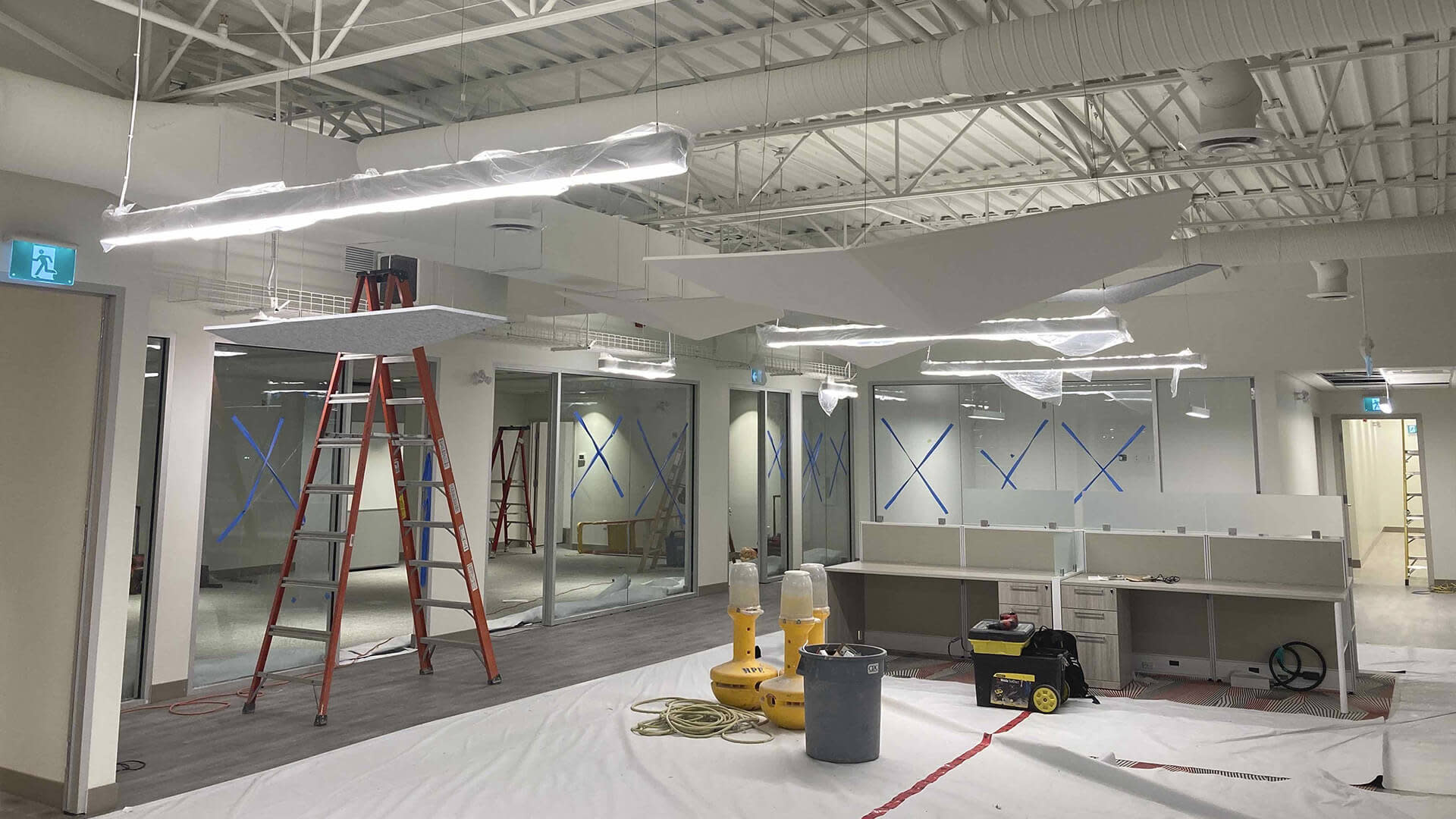Customer Story
Efficient growth and real-time collaboration
CDC Construction Ltd. utilized Procore to help improve scheduling, streamline communication, and provide accurate updates to stakeholders

The Challenge
CDC Construction Ltd. planned to expand, and knew it needed a better way to share information that could scale with the demands of its business. More efficiency was required in the way workers were scheduled, not just to keep everyone on the same page day-to-day but also to enable long-term planning of how tradespeople are deployed.
The company didn’t want to train staff on different software products addressing different aspects of the business; instead the ideal solution would be a single platform where everyone on the team could collaborate and share information in one place.

The Solution
After a thorough search, CDC chose Procore for its ability to manage all aspects of a construction project and provide one source of truth for managers, subcontractors and owners.

The Results
- With real-time scheduling, managers can efficiently determine worker availability
- Using a single source of truth, all stakeholders have immediate access to project information
- Leveraging a platform that can grow with them, CDC can manage more projects and people
“With Procore, we can show clients we’re able to provide them with more visibility; they don’t have to wait for us to send them information.”
Andrew Matheson
Director of Finance and Operations
CDC Construction Ltd.
A Solution The Field Can Pick Up Quickly
Founded in 1984, CDC is a commercial general contractor and construction management company working in the Vancouver area. Its focuses include hospitals and other healthcare facilities, restaurants, and retail spaces. Its special projects division works on new buildings, including external envelopes.
“The impetus for Procore was that we just kept adding additional bodies to deal with the volume of work, and that requires more management,” says Andrew Matheson, Director of Finance and Operations.
CDC was using a variety of point solutions to manage its projects, with people using paper, email and spreadsheets to different degrees. Employees in the office and those in the field were also working with information in different ways. It considered several construction management solutions, but found many were too narrow in focus for the company’s needs. “We would have needed one piece of software for field management, another one for project management, and another for financial management, whereas Procore could do all of them. That was the deciding factor.”
The company now uses Procore to manage documents, drawings, photos, budgets, daily logs, RFPs, inspections and deficiencies. Procore’s integration with Sage, the accounting software used by CDC, made the transition smooth.
CDC was mindful that it needed a solution that field workers would find intuitive and useful. “The fact Procore is designed with the field in mind means people pick it up really quick, which helped adoption. Things work the way you’re used to.”
Matheson found Procore to be very attentive during the onboarding process. “And that level of support has continued.”
Worker Schedules Updated in Real-time
CDC saw an opportunity to improve the way it schedules workers to avoid confusion, double booking and unexpected shortages.
“Before, our labour manager would make phone calls and figure out where people were and update our schedule spreadsheet, and then it would go out to the team,” says Matheson. “But it would almost immediately be obsolete. We’d assume somebody was available, and they would already be spoken for. At times, it could be a bit of a free for all, pulling people from one job to another.”
The system created uncertainty for everyone. “From a worker’s perspective, it’s a bit stressful if you don’t know on a Friday where you’re going on a Monday.”
Now, Procore Workforce Planning has enabled CDC to better manage its labour pool. “If someone’s looking for a worker for a job, they can go into Procore and see the schedule in real-time. Before, there was no consistent way to make labour requests. People would text, email or even call saying they need this person in three days. Requests could get lost in the shuffle that way. Having a consistent way to send in labour requests has helped a lot.”
Workforce Planning also makes it possible to build long-term labour plans. “A two-week look ahead is fine, but it doesn’t really give you an opportunity to identify major conflicts and make hiring decisions if say your entire drywall crew is spoken for three times over in a month.” With Procore, CDC now has visibility into its labour needs months ahead. There’s more consistency, certainty and improved coordination when it comes to the company’s labour pool.
Greater Visibility for All Stakeholders
Procore has made project information more accessible for staff, subcontractors and owners. “It’s one thing for a superintendent to write a daily log that gets filed in a binder on-site,” says Matheson. “But now with Procore, the project manager and general superintendent can see the log and refer back to it a year from now.”
Subcontractors have benefited from greater access to information. “We create contracts in Procore with all the backup documentation, including their quote, their scope and inclusions and exclusions. If anything changes, it changes in Procore and the superintendent can go in and see the latest information. They’re not relying on someone to send them those updates.”
CDC has also made some information available to owners, who can log into Procore to see daily logs and site photos.
Each stakeholder can access information relevant to them in real-time, from any device.
Positioned to Grow
CDC has a controlled growth strategy for the future focused on the healthcare space it’s known for. The company has recently been involved in the construction of primary care centres in British Columbia, facilities designed for emergent care that can be provided outside a hospital setting.
As it grows, CDC sees Procore as a way to attract clients and workers.
“It’s been a sales tool for us,” says Matheson. “With Procore, we can show clients we’re able to provide them with more visibility; they don’t have to wait for us to send them information.”
On the staffing front, Matheson sees benefits too. “With a lot of younger people coming into the industry, there’s an expectation that they’re going to be using technology to do their jobs. So that can help us attract people, whether it’s right out of school or early on in their career. They want to work for an organization that allows them to use those tools to better do their job. We’re able to offer that to future workers, and reap the benefits on the projects we’re working on today.”




